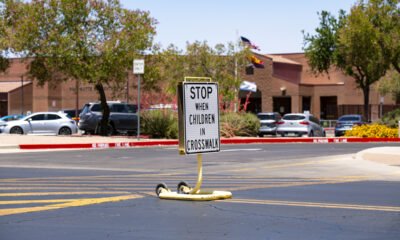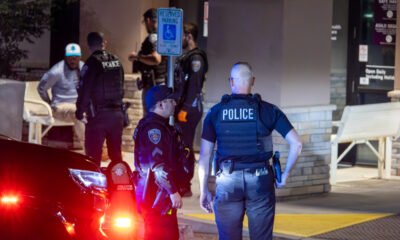Business
Schools and Public Buildings Embrace AI-Powered Gun Detection Technology

A tragic shooting incident at Antioch High School in Nashville in January has raised serious questions about AI gun detection technology. The school had recently contracted with Omnilert, an AI gun detection company, to enhance safety measures. However, the system failed to detect a 17-year-old student wielding a firearm before he opened fire.
Omnilert’s $1 million contract took effect in February 2024, aiming to utilize AI software to analyze security camera footage for potential threats. Despite this technology, school representatives indicated that camera placements were inadequate to capture the shooter in action.
The unfortunate event resulted in the death of 16-year-old Josselin Corea Escalante and left another student injured in the cafeteria. The shooter subsequently took his own life. While the Omnilert system detected weapons carried by responding police officers, it failed at the critical moment of the shooting.
Following the incident, CEO Dave Fraser and his company faced backlash for the technology’s ineffectiveness. Still, school safety advocates argue that gun violence is a complex issue, with numerous contributing factors. They emphasize that no single tool can guarantee prevention.
Steve Webb, a school safety educator, noted the variety of technology options available to institutions. “Schools are not just relying on technology but integrating it as part of a broader strategy,” he remarked. Omnilert’s AI uses vast amounts of footage to identify firearms, but efficacy heavily depends on camera quality and positioning.
Other companies, like ZeroEyes, offer similar technology. Their AI analyzes archived security footage and employs a “human-in-the-loop” system, where a team reviews flagged images of potential threats. This process helps mitigate false alerts, ensuring that accurate information is relayed to schools and emergency responders when necessary.
ZeroEyes has implemented its system across 47 states, successfully intervening in various incidents where weapons were detected. This highlights the growing reliance on technology to manage safety in schools and public spaces.
Iterate.ai offers an open-source alternative for gun detection, making their technology accessible without charging schools. CEO Jon Nordmark stated, “We preferred to provide easily usable tools rather than monetize safety.” Their AI model has even been trained to identify various threats, including knives and vests.
While the acceptance of gun detection technologies is expanding, regulatory issues loom. In Florida, two Republican legislators have proposed bills to restrict the use of such systems in public areas. Meanwhile, Colorado has seen initiatives aimed at funding these safety measures, especially following previous tragic shootings.
Advocacy for a comprehensive approach to school safety continues, as educators and technology developers recognize that their systems are only part of a multifaceted solution. Issues surrounding gun culture, online influences, and individual behavioral factors contribute to a need for thorough strategies that include community awareness and human intervention.
Ultimately, the development and deployment of gun detection technology are evolving in response to a pressing societal concern. As stakeholders seek improvements in safety measures, understanding the limitations and strengths of these technologies remains crucial.


















